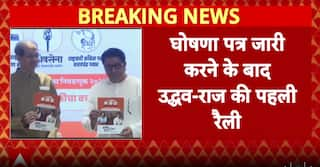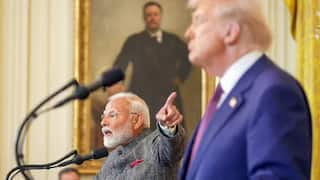Indian-Origin Scientist Finds New Material Using AI Which Could Reduce Use Of Lithium In Batteries By 70%
Microsoft Quantum team used AI and supercomputing to narrow down from 31 million materials to this new material which is expected to reduce the use of lithium by 70 per cent.

In a major breakthrough, an Indian-origin scientist, Vijay Murugesan and his team have discovered a new battery material that could reduce the use of lithium in batteries by 70 per cent. The scientists found this material by using Artificial Intelligence (AI) and supercomputing. The aforementioned findings were made jointly by Microsoft and the US-based Pacific Northwest National Laboratory (PNNL).
According to a report in a Tamil Nadu news daily, DT Next, this new battery material was derived using Microsoft’s Azure Quantum Elements to narrow down from 32 million potential inorganic materials to 18 promising ones which could be used in the development of batteries in just 80 hours. The Microsoft Quantum team used AI and identified around 500,000 stable materials in the space of a few days.
Since this new material was discovered, it has been used to power a lightbulb. At the moment, it is a solid-state electrolyte. Ions shuttle back and forth through the electrolyte, between the cathode and the anode, ideally with minimal resistance. Earlier scientists used to believe that sodium ions and lithium ions can not be used together in a solid-state electrolyte system as they are similarly charged but have different sizes.
Scientists assumed that the structural framework of a solid-state electrolyte material would not be able to support the movement of two different ions. However, after testing, the Indian-origin scientist said, “We found that the sodium and lithium ions seem to help each other," as reported by Business Today.
Inception Of Lithium Ion In Battery-Making
The element lithium started getting used as a battery component in the early 1900s. However, the rechargeable lithium-ion batteries did not hit the market until the 1990s. In today's world, lithium-ion batteries power almost everything from phones to medical gadgets, electric vehicles, and satellites.
As per the BBC, the US Department of Energy has predicted that the demand for lithium will increase five to tenfold by the year 2030. It is already relatively short, making it expensive. To add on to that, mining it is not just environmentally but geopolitically problematic as well.
The traditional lithium-ion batteries also pose safety issues, ranging from the potential of catching fire to explosions. Researchers across the globe are looking for alternatives for both lithium as well as for the materials used as electrolytes.
Now, as per scientists, solid-state electrolytes show promise for their stability and safety.
Related Video
Apple creates a new record in iPhone sales after launch of iPhone 16 | ABP Paisa Live





































